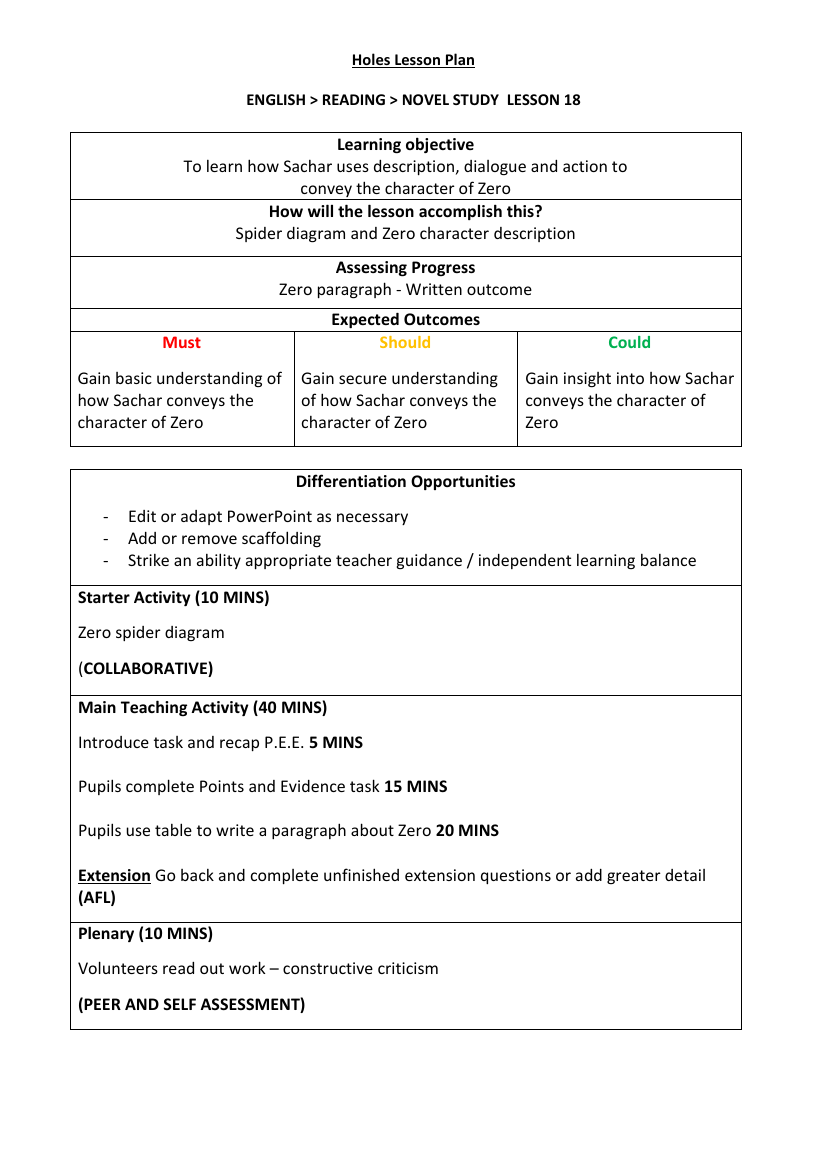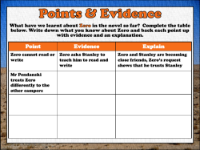Holes Lesson 18: 'a hundred times zero was still nothing' - Lesson Plan

English Resource Description
The 18th lesson in the Holes series focuses on developing students' understanding of the character Zero through the analysis of Louis Sachar's narrative techniques, such as description, dialogue, and action. The learning objective is for students to explore and articulate how these elements contribute to the portrayal of Zero. To achieve this, the lesson plan includes creating a spider diagram to visually organize thoughts about Zero, followed by a more detailed written description of the character.
The lesson is structured to assess progress through a written outcome, with students expected to craft a paragraph that encapsulates their understanding of Zero's character. The expected outcomes are tiered to cater to different levels of comprehension: a basic grasp of the character for all students, a secure understanding for most, and deeper insights for those who are able to delve further into Sachar's writing techniques. Differentiation opportunities are available, such as customizing the PowerPoint presentation, adjusting scaffolding, and balancing teacher guidance with independent learning to suit varying abilities.
The starter activity involves collaborative work on a spider diagram related to Zero, which serves as a brainstorming tool. The main teaching activity spans 40 minutes, starting with an introduction to the task and a recap of the Point, Evidence, Explanation (P.E.E.) structure. Students then engage in a Points and Evidence task, followed by using a table to help them write a comprehensive paragraph about Zero. For those who finish early or need an additional challenge, there is an extension task to add more detail or complete unfinished extension questions. The lesson concludes with a plenary session where volunteers read out their work and receive constructive feedback through peer and self-assessment.



